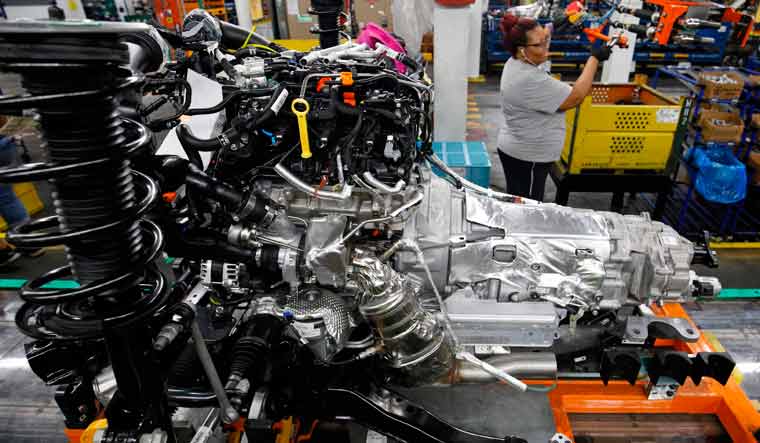The auto ancillary sector’s revenue is expected to shrink 16-20 per cent in the current financial year, with both domestic market as well as exports likely to see contraction in demand, according to India Ratings and Research.
The rating agency also said it has maintained a negative outlook for the auto ancillary sector for the October-March period of 2020-21.
It said auto ancillaries with high exposure to the commercial vehicle segment are expected to continue to be the worst impacted, in relation to those with higher two-wheeler, passenger vehicle or tractor segment exposures.
While the sector was expected to start recovering from the second half of 2020-21, the revenue may now record a decline of 16-20 per cent y-o-y in the overall fiscal, India Ratings and Research (Ind-Ra) said in a release.
Although demand from the after-market segment is also likely to remain subdued, it would be the least affected. However, the performance in the October-March period of 2020-21 is expected to be better than the previous half, as auto demand has shown a gradual improvement in both domestic and exports markets.
According to the release, a recovery to pre-COVID-19 levels is expected by the second half of this fiscal stoked by an improvement in demand from OEMs and exports.
Ind-Ra expects auto ancillaries to record revenue growth of 12-15 per cent y-o-y in 2021-22, as most auto ancillaries have taken cost cutting measures to curtail fixed costs in FY21. However, lower operating leverage could constrain profitability margins by 200-250 basis points Year-on-Yera, it said. Ind-Ra has also maintained a negative outlook on its rated portfolio for 2020-21 based on the expectations of a continued weaker-than-envisaged operating performance and credit metrics amid a challenging economic environment, the ratings agency said.
Credit metrics are expected to further weaken in 2020-21. Although sector companies had deferred non-essential capex in 2019-20 and 2020-21, the lower profitability in these two years is likely to negatively affect credit metrics, it said. Credit metrics are expected to improve in 2021-22, as profitability recovers. However, it would remain weaker than 2019-20 levels, it said. The capital expenditure (capex) requirements to cater to evolving regulations, such as corporates’ average fuel economy norms to be implemented in the next two years, could weaken credit metrics in the medium-term, if demand is unable to pick up as expected, the agency said. It added that cost control and working capital management remain key in this environment.
Favourable regulatory changes such as GST cuts or incentive-based scrappage policy could help revive demand in the medium term for the auto sector and in turn for auto ancillaries, it said.
Furthermore, original equipment manufacturers could look at local procurement of components that are currently imported, benefiting the sector in the medium-to-long term, the ratings agency added.
